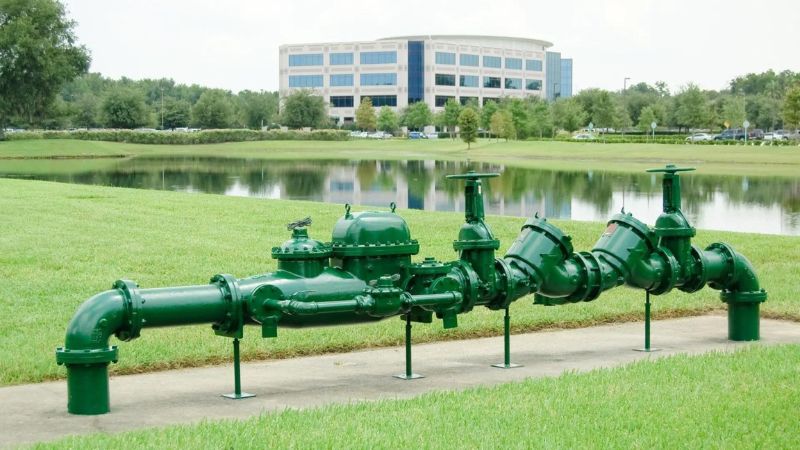
xr:d:DAGCe1u7mnM:4,j:3211491475767477993,t:24041511
Welcome to our exploration of a crucial aspect of plumbing – “The significance of preventing backflow.” Backflow can be a major health hazard in plumbing systems because it allows tainted water to return to the pure water source. This blog sheds light on the significance of backflow prevention, addressing how it safeguards public health and the integrity of our water sources. Whether you’re a homeowner, a business owner, or a plumbing professional, understanding the importance of backflow prevention is vital for ensuring a safe and reliable water supply. Join us as we delve into the reasons why investing in backflow prevention measures is a responsible choice for maintaining the integrity of your plumbing infrastructure.
1. Preserving Water Quality: A Priority for Public Health

Backflow prevention plays a pivotal role in safeguarding water quality and, consequently, public health. In plumbing systems, backflow occurs when the normal flow of water reverses, potentially allowing contaminants from non-potable sources to infiltrate the clean water supply. This contamination can introduce harmful bacteria, chemicals, or other pollutants, posing severe health risks to consumers. By implementing backflow prevention measures, we establish a robust defense mechanism against the potential hazards associated with cross-contamination, ensuring that the water reaching our taps remains safe for consumption.
2. Compliance with Regulations: Legal and Ethical Responsibility
Ensuring backflow prevention is not only a matter of public health but also a legal and ethical responsibility. Many jurisdictions mandate the installation of backflow prevention devices in specific plumbing systems to meet regulatory standards. Failure to comply with these regulations can result in legal consequences, fines, and, more importantly, compromised public health. Plumbing systems in residential, commercial, and industrial settings must adhere to these regulations, emphasizing the gravity of implementing effective backflow prevention strategies. Compliance serves as a proactive approach to maintaining the integrity of water distribution systems and upholding the well-being of communities.
Read Also: Exploring Modern Kitchen Plumbing Trends
3. Protecting Potable Water Sources: A Crucial Infrastructure Aspect
Backflow prevention acts as a safeguard for potable water sources, preventing the inadvertent mixing of clean water with potentially contaminated water. Without effective prevention measures, pollutants from irrigation systems, industrial processes, or other non-potable sources could infiltrate municipal water supplies. This intrusion poses a substantial risk to the reliability and safety of our drinking water. By prioritizing backflow prevention, we fortify the resilience of our water infrastructure, ensuring that the water delivered to homes and businesses remains consistently free from contaminants.
4. Mitigating Health Risks in Residential and Commercial Spaces

In residential and commercial settings, the importance of backflow prevention becomes even more pronounced. Homes, schools, hospitals, and businesses all rely on a safe and uncontaminated water supply. Backflow incidents in these environments can lead to widespread health risks, affecting individuals of all ages. Installing backflow prevention devices at strategic points in plumbing systems becomes a proactive measure to mitigate these risks, providing assurance that the water used for drinking, cooking, and other essential activities is free from potential contaminants.
5. Annual Testing: Ensuring Continued Effectiveness
While installing backflow prevention devices is a critical step, regular testing is equally essential to ensure their continued effectiveness. Annual testing helps identify any malfunctions, wear, or other issues that could compromise the device’s ability to prevent backflow. This proactive approach not only keeps plumbing systems in compliance with regulations but also serves as a preventative measure against potential health hazards. Plumbing professionals conduct thorough tests, making necessary adjustments or replacements to maintain the reliability of backflow prevention devices.
Read Also: Understanding the Basics of Plumbing Vent Systems
6. Cost-Effective Prevention: A Long-Term Investment
Investing in backflow prevention measures proves to be a cost-effective strategy in the long run. The potential health risks and legal consequences associated with backflow incidents can result in substantial financial burdens. By proactively implementing and maintaining backflow prevention devices, property owners and businesses minimize the risk of costly repairs, legal ramifications, and the potential damage to their reputation. Viewed as a long-term investment, backflow prevention emerges as a responsible and financially prudent choice for preserving the integrity of plumbing systems and protecting public health.
Conclusion
In conclusion, the importance of backflow prevention in plumbing cannot be overstated. Safeguarding our water supply from contamination is not just a matter of compliance; it is a fundamental responsibility to protect public health. By investing in reliable backflow prevention devices and practices, we contribute to the resilience of our plumbing systems and ensure that the water flowing into our homes and businesses remains clean and safe. As we navigate the complex network of pipes and valves in our plumbing infrastructure, prioritizing backflow prevention emerges as a proactive and essential step towards maintaining a healthy and reliable water supply for everyone.
FAQ
Why is backflow prevention necessary in plumbing systems?
Backflow prevention is crucial in plumbing systems to prevent the contamination of clean water with harmful substances. It ensures that water flows in one direction, preventing the reversal of water flow that could introduce pollutants or pathogens into the potable water supply.
How often should backflow prevention devices be tested?
Backflow prevention devices should be tested annually to ensure their proper functioning. Regular testing helps identify potential issues and ensures that the devices are in compliance with local regulations, maintaining the integrity of the plumbing system.



